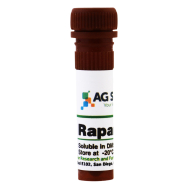When cancer cells start to grow uncontrollably, the mTORnormal checkpoints and developmental programming become hijacked by signals emitted from the tumorous growth. One common side effect of chemotherapy and other forms of cancer treatment is drug-resistance. Usually during therapy, a second cancer-signaling pathway is opened as soon as the primary one shuts down. The investigators of this research concluded that this creates, “an ingenious escape route for the cancer cell to survive
When cancer cells start to grow uncontrollably, the normal checkpoints and developmental programming become hijacked by signals emitted from the tumorous growth. One common side effect of chemotherapy and other forms of cancer treatment is drug-resistance. Usually during therapy, a second cancer-signaling pathway is opened as soon as the primary one shuts down. The investigators of this research concluded that this creates, an ingenious escape route for the cancer cell to survive.
The answer, say Case Western Reserve researchers, requires doctors to anticipate resistance and block the back-up pathway by prescribing two drugs from the start, dasatinib and rapamycin.
The outcome of the project, led by Ruth Keri, PhD, Professor and Vice Chair Department of Pharmacology, and Associate Director for Basic Research in the Case Comprehensive Cancer Center, can be found HERE in this fall's issue of Cancer Research [1].
Interestingly, the design of their experiment was hardly as simple as doubling-up on the cancer drugs prescribed. These scientists needed to settle on certain drugs that could, in their estimation, preempt the cancer cells moves. Basically, Keri and co-workers used the normal developmental circuitry to prevent attack. This also had the effect of tricking the cancer cells into believing their initial plan of attack was, nevertheless, continuing right on ahead.
Also curiously, neither medication when used separately (that is, not in combination with the other) has shown a significant clinical efficacy in treating breast cancer.
Continuing clinical studies joining rapamycin or dasatinib with other treatments have been affirming; on the other hand, this research is the first of its kind to reveal that the specific combination of these two medications might be advantageous in managing breast cancer to the point, perhaps, of full recovery.
How does dasatinib and rapamycin work?
Here is just how dasatinib and rapamycin disrupts normal programming and the way a cancer cell functions.
mTOR, which stands for mechanistic target of rapamycin, is the main signaling protein regulating (directly and indirectly) some 800 known downstream targets controlling cellular growth, metabolism, and survival [2]. When mTORsignaling begins, the hyper development of tissues characteristic of cancer soon follows. If mTOR signs are blocked, another polypeptide, AKT (protein kinase B), takes control and indicates success to cancer cells to carry on. At the same time, other members of Src Family Kinases (SFKs) are brought into the fold to function in-concert with AKT andmTOR in delivering signs that help market tumor development.
Research in the Keri lab found that dasatinib blocks SFK signaling. When SFKs are blocked by the medication dasatinib, signaling stops preventing AKT from being tipped off that rapamycin has shut down mTOR signaling. Since AKT won't understand to step in and deliver the required signs for tumor development to carry on, the cancer cells eventually die off.
"We found if you put the two drugs together, you have much better ability to kill tumors than applying either drug alone," Keri said. That's the major discovery. Prescribing both is much better than just selecting one or the other.
Experimental Design
Researchers used two distinct mouse models to present the effectiveness of their medical mixture. Magnetic resonance imaging (MRI), the same kind that tracks a patient's tumor(s), was used occasionally to imagine tumor growth. As soon as researchers noticed the mice developing tumors, one group received both rapamycin and dasatinib, one group received only rapamycin, one group receiving only dasatinib, and a final group receiving a placebo.
In the group that mixed rapamycin and dasatinib, the tumors were either reduced in size, or they faded away entirely. None of the mice in this group experienced tumor growth while receiving double doses. On the other hand, mice in the groups receiving just one drug (either rapamycin or dasatinib) experienced a sustained tumor growth. Through the entire length of the research, tumors increased quickly in both groups.
Worse, as soon as treatment was stopped in both groups receiving the single drug, each saw their tumors grow back to their original size, some bigger than before, within just a few days. When treatment stopped in the group receiving both drugs, significant tumor growth was delayed for months.
"Dual treatment clearly delays the regrowth of tumors," Keri said.
Next, Keri and her staff hope to start a medical trial to find out whether this combination treatment is as effective in people as it is in mice. Their first step will be to evaluate whether or not this combination of medications is toxic in humans. As to this part of the research, the mice themselves showed no problems with toxicology.
"We hope to see the same effect in humans that we saw in the mouse model, and ultimately, to stop, or significantly delay, tumor growth," Keri said.
Journal Sources
The above story is based on materials provided by Case Western Reserve University.
[1] J. L. Yori, K. L. Lozada, D. D. Seachrist, J. D. Mosley, F. W. Abdul-Karim, C. N. Booth, C. A. Flask, R. A. Keri.Combined SFK/mTOR Inhibition Prevents Rapamycin-Induced Feedback Activation of AKT and Elicits Efficient Tumor Regression. Cancer Research, 2014; 74 (17): 4762. <http://cancerres.aacrjournals.org/content/74/17/4762>
[2] Serine/Threonine Protein Kinase mTOR. Repository of Enhanced Structures of Proteins Involved in the Red Blood Cell Environment. http://www.uniprot.org/uniprot/P42345. [Accessed on Sunday, December 15, 2014].
normal checkpoints and developmental programming become hijacked by signals emitted from the tumorous growth. One common side effect of chemotherapy and other forms of cancer treatment is drug-resistance. Usually during therapy, a second cancer-signaling pathway is opened as soon as the primary one shuts down. The investigators of this research concluded that this creates, an ingenious escape route for the cancer cell to survive.
The answer, say Case Western Reserve researchers, requires doctors to anticipate resistance and block the back-up pathway by prescribing two drugs from the start, dasatinib and rapamycin.
The outcome of the project, led by Ruth Keri, PhD, Professor and Vice Chair Department of Pharmacology, and Associate Director for Basic Research in the Case Comprehensive Cancer Center, can be found HERE in this fall's issue of Cancer Research [1].
Interestingly, the design of their experiment was hardly as simple as doubling-up on the cancer drugs prescribed. These scientists needed to settle on certain drugs that could, in their estimation, preempt the cancer cells moves. Basically, Keri and co-workers used the normal developmental circuitry to prevent attack. This also had the effect of tricking the cancer cells into believing their initial plan of attack was, nevertheless, continuing right on ahead.
Also curiously, neither medication when used separately (that is, not in combination with the other) has shown a significant clinical efficacy in treating breast cancer.
Continuing clinical studies joining rapamycin or dasatinib with other treatments have been affirming; on the other hand, this research is the first of its kind to reveal that the specific combination of these two medications might be advantageous in managing breast cancer to the point, perhaps, of full recovery.
How does dasatinib and rapamycin work?
Here is just how dasatinib and rapamycin disrupts normal programming and the way a cancer cell functions.
mTOR, which stands for mechanistic target of rapamycin, is the main signaling protein regulating (directly and indirectly) some 800 known downstream targets controlling cellular growth, metabolism, and survival [2]. When mTORsignaling begins, the hyper development of tissues characteristic of cancer soon follows. If mTOR signs are blocked, another polypeptide, AKT (protein kinase B), takes control and indicates success to cancer cells to carry on. At the same time, other members of Src Family Kinases (SFKs) are brought into the fold to function in-concert with AKT andmTOR in delivering signs that help market tumor development.
Research in the Keri lab found that dasatinib blocks SFK signaling. When SFKs are blocked by the medication dasatinib, signaling stops preventing AKT from being tipped off that rapamycin has shut down mTOR signaling. Since AKT won't understand to step in and deliver the required signs for tumor development to carry on, the cancer cells eventually die off.
"We found if you put the two drugs together, you have much better ability to kill tumors than applying either drug alone," Keri said. That's the major discovery. Prescribing both is much better than just selecting one or the other.
Experimental Design
Researchers used two distinct mouse models to present the effectiveness of their medical mixture. Magnetic resonance imaging (MRI), the same kind that tracks a patient's tumor(s), was used occasionally to imagine tumor growth. As soon as researchers noticed the mice developing tumors, one group received both rapamycin and dasatinib, one group received only rapamycin, one group receiving only dasatinib, and a final group receiving a placebo.
In the group that mixed rapamycin and dasatinib, the tumors were either reduced in size, or they faded away entirely. None of the mice in this group experienced tumor growth while receiving double doses. On the other hand, mice in the groups receiving just one drug (either rapamycin or dasatinib) experienced a sustained tumor growth. Through the entire length of the research, tumors increased quickly in both groups.
Worse, as soon as treatment was stopped in both groups receiving the single drug, each saw their tumors grow back to their original size, some bigger than before, within just a few days. When treatment stopped in the group receiving both drugs, significant tumor growth was delayed for months.
"Dual treatment clearly delays the regrowth of tumors," Keri said.
Next, Keri and her staff hope to start a medical trial to find out whether this combination treatment is as effective in people as it is in mice. Their first step will be to evaluate whether or not this combination of medications is toxic in humans. As to this part of the research, the mice themselves showed no problems with toxicology.
"We hope to see the same effect in humans that we saw in the mouse model, and ultimately, to stop, or significantly delay, tumor growth," Keri said.
Journal Sources
The above story is based on materials provided by Case Western Reserve University.
[1] J. L. Yori, K. L. Lozada, D. D. Seachrist, J. D. Mosley, F. W. Abdul-Karim, C. N. Booth, C. A. Flask, R. A. Keri.Combined SFK/mTOR Inhibition Prevents Rapamycin-Induced Feedback Activation of AKT and Elicits Efficient Tumor Regression. Cancer Research, 2014; 74 (17): 4762. <http://cancerres.aacrjournals.org/content/74/17/4762>
[2] Serine/Threonine Protein Kinase mTOR. Repository of Enhanced Structures of Proteins Involved in the Red Blood Cell Environment. http://www.uniprot.org/uniprot/P42345. [Accessed on Sunday, December 15, 2014].

